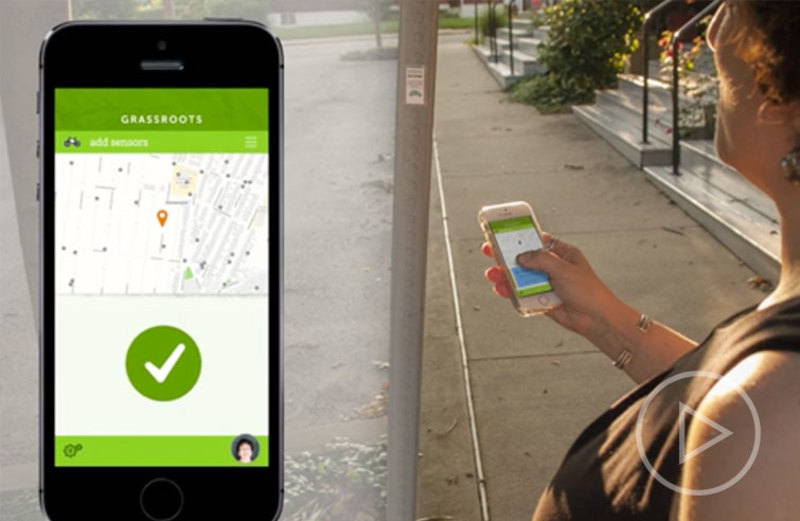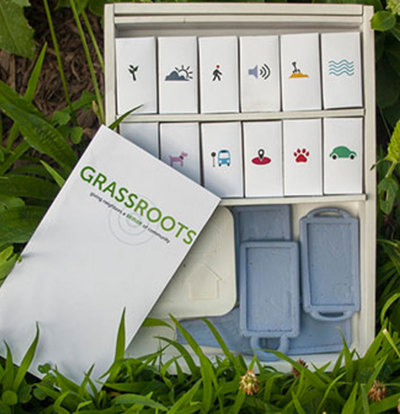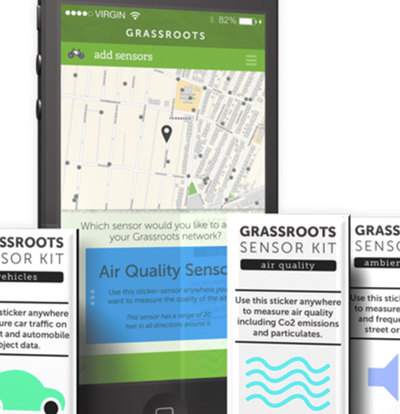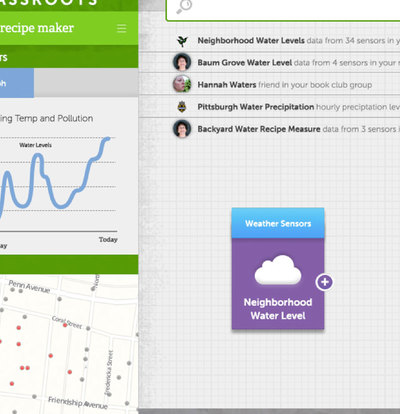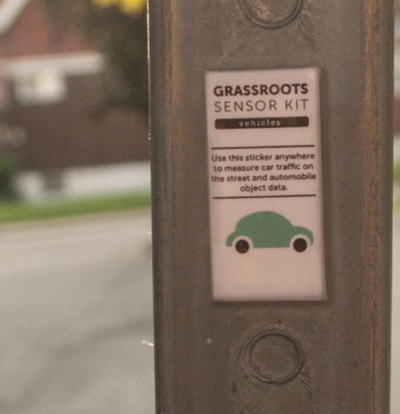GrassRoots Neighborhood Sensors
Microsoft asked us, "How will the world of a billion sensors look?"
We were asked by Microsoft Design to explore what a future where billions of sensors looks like. In order to do so, we reviewed the current technology, defined worthwhile social problems that new sensor technology might be able to address, and developed a design solution.
We noticed that in 2014 were mostly aimed at individuals. Looking at the rapidly diminishing price of hardware, the increased interconnectivity of sensors, and a personal belief that more people should be involved in owning, directing, and analysing sensor data, we created GrassRoots a system that allows neighbors to share and maintain their own sensor networks.
The system is composed of multiple parts that together give neighbors greater control of producing and sharing data about their neighborhoods. It includes temporary sensors that can be stuck around the neighborhood, a smartphone application for tagging the sensors and performing initial set-up, and a web application where neighbors can go to analyze their data and export data.
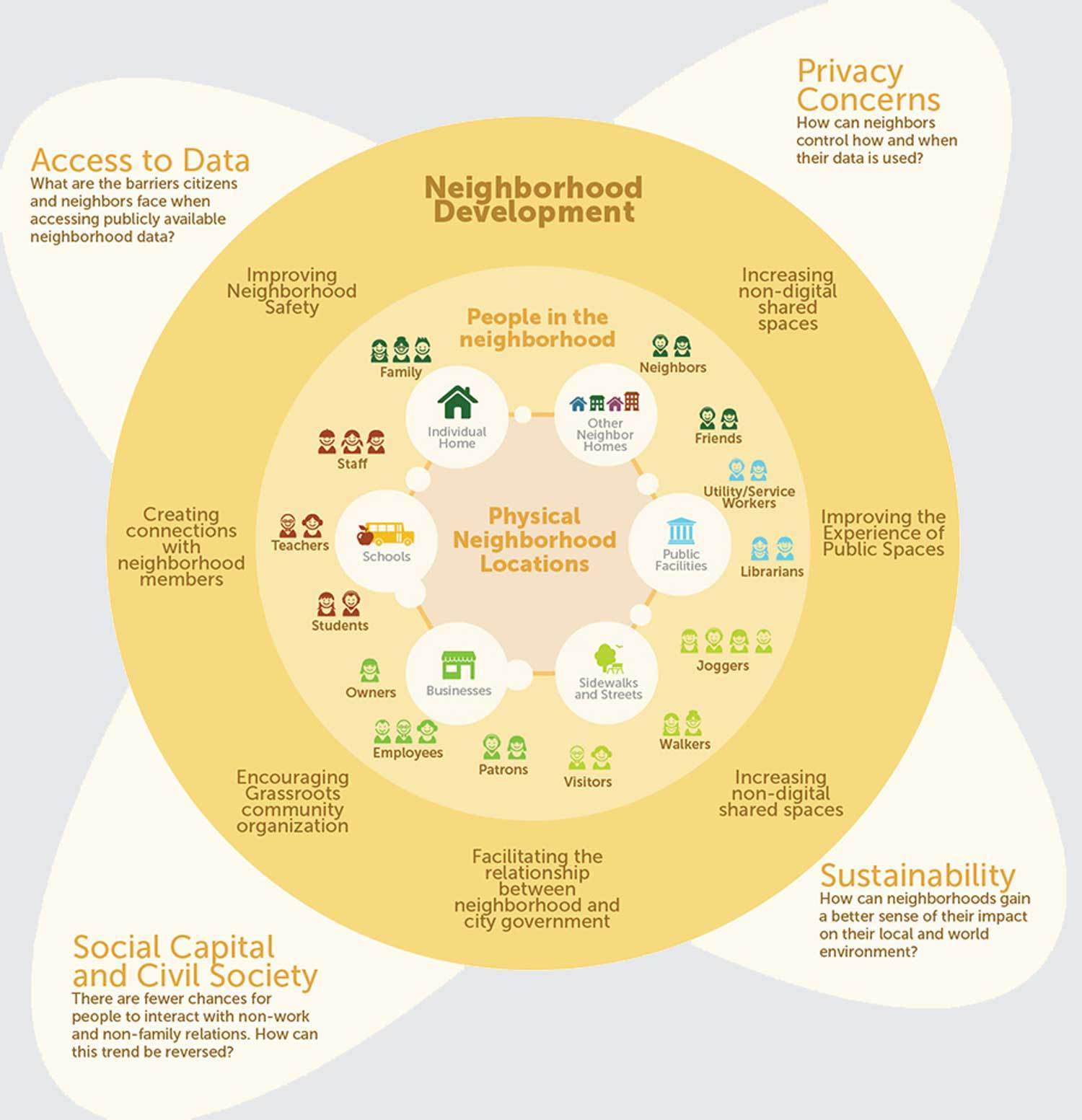
Preliminary Research and Scope
Because the problem statement asking us to look at a future of a billion sensors was so ill-defined, our teams first challenge was setting an appropriate scope for the research. Through team discussion, we had a hunch that there was a level of civic community between households and cities that were underserved by current technology. From this hunch, we interviewed scholars in neighborhood development, community organizers, and long-time residents of neighborhoods to get a sense of how technology could support their pre-existing work.
Two interesting threads came from this preliminary research and interviewing. We first found that the concept of “pioneer” neighbors was important. These people were particularly active and adventurous in their communities. Supporting them with technology would lead to big changes. We also found that the physical terrain of the neighborhood lacked consumer technology. Streets, sidewalks, yards, etc. might be fertile ground to design in.

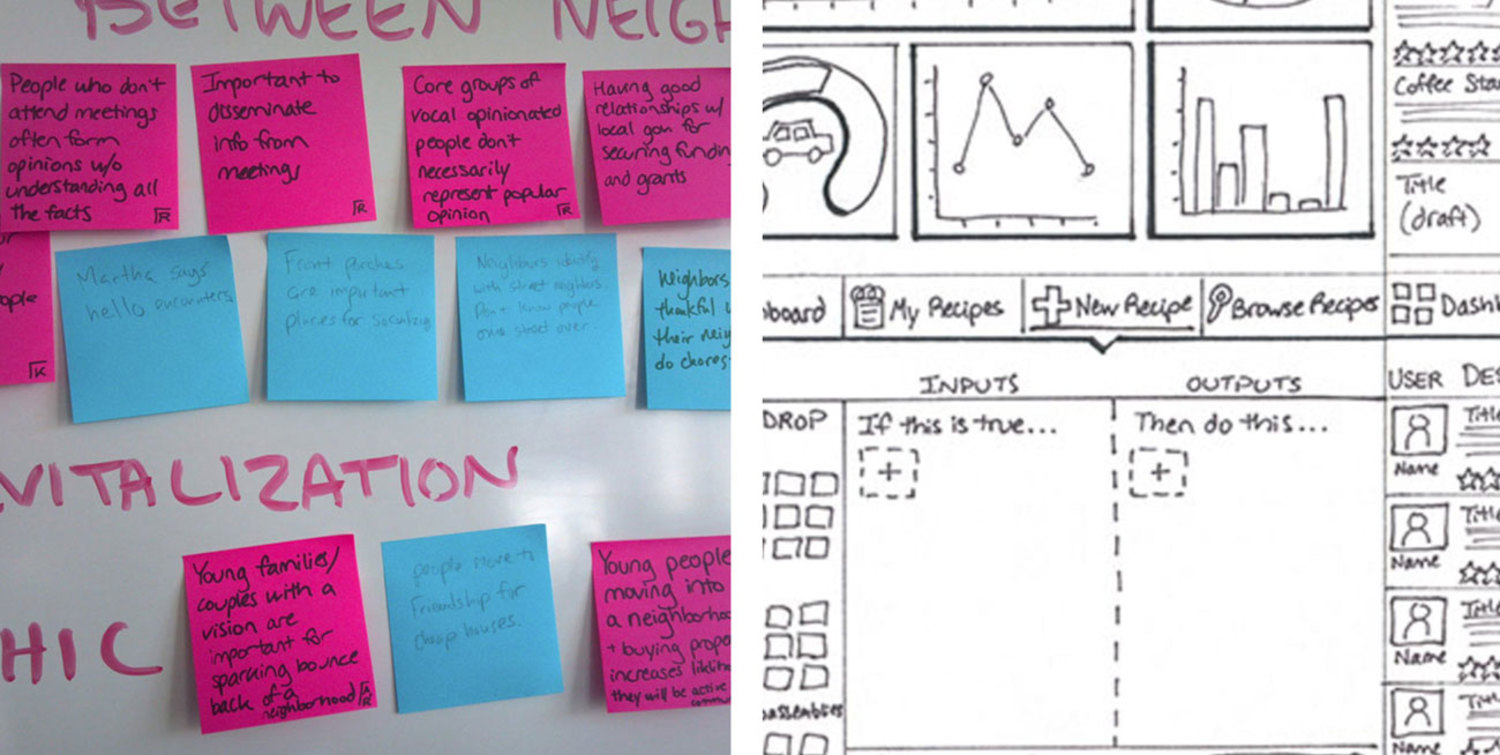
Personas and Ideation
From the interviews and research, we looked at the different steps of sensemaking and how sensors could fit into the sensemaking process. We considered intervening at different points from deploying sensors, gathering data, sharing data, and advocating for change. We used common design techniques such as low-level sketching and affinity diagramming the results of our experiments.
While many systems like “If This Then That” offer rudimentary programming, we found that without the ability to set up a sensor network, our neighbors would be limited to using corporation-created Internet Of Things appliances that would likely be at odds with neighborhood growth. We chose to focus on a Pioneer Neighbor Toolkit to enable enthusiastic neighbors to embrace a future of a billion sensors.
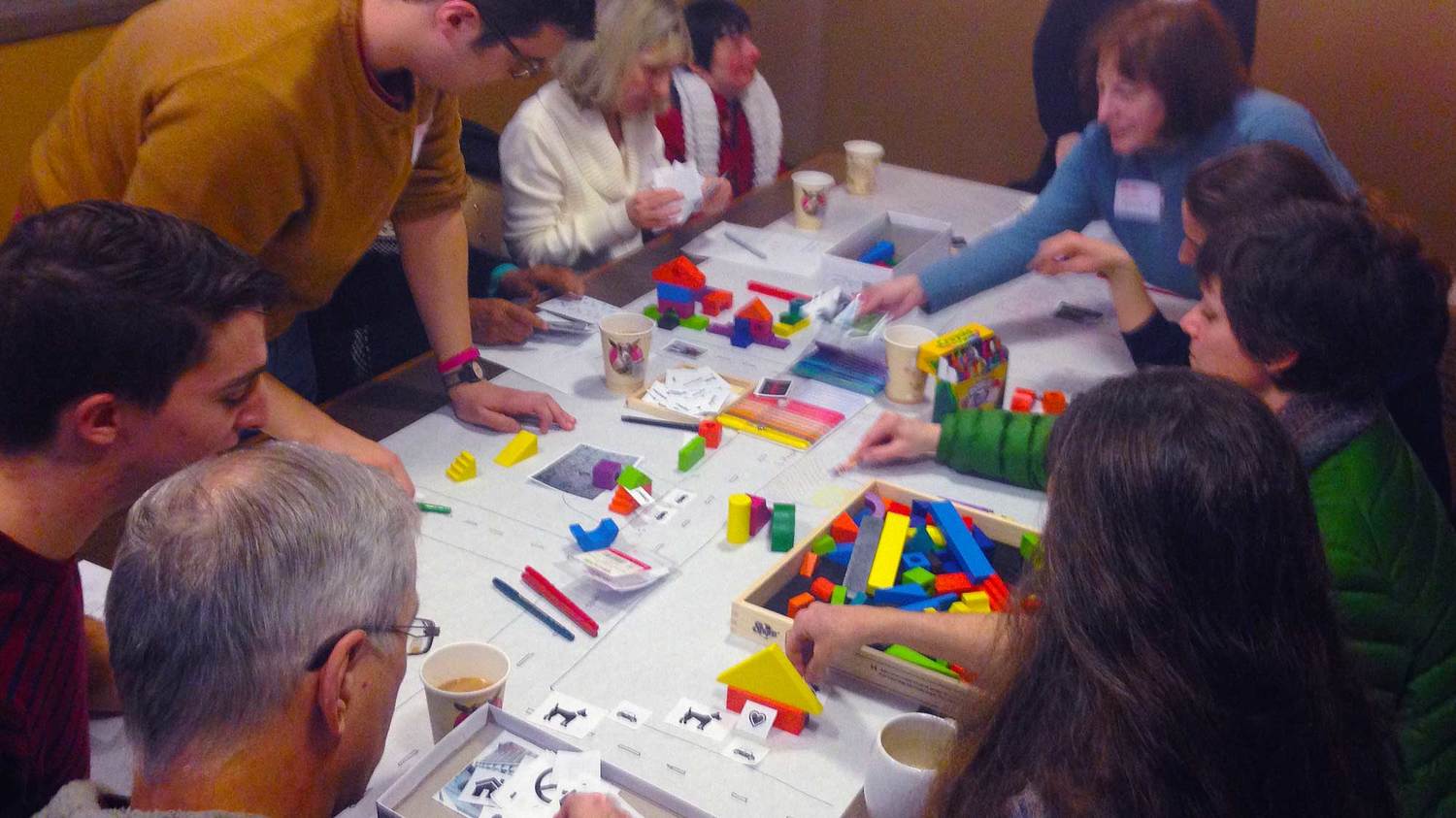
Community Engagement
In order to better understand how actual neighbors might use our Pioneer Toolkit (now renamed GrassRoots Sensor System), we created a physical prototype that neighbors could touch and place throughout their neighborhood, temporarily. We also held participatory design sessions where we gave neighbors a map of their neighborhood and our hypothetical sensors. Neighbors came up with new ideas not only for using the sensors, but of new ways of connecting, communicating, and protecting the system.
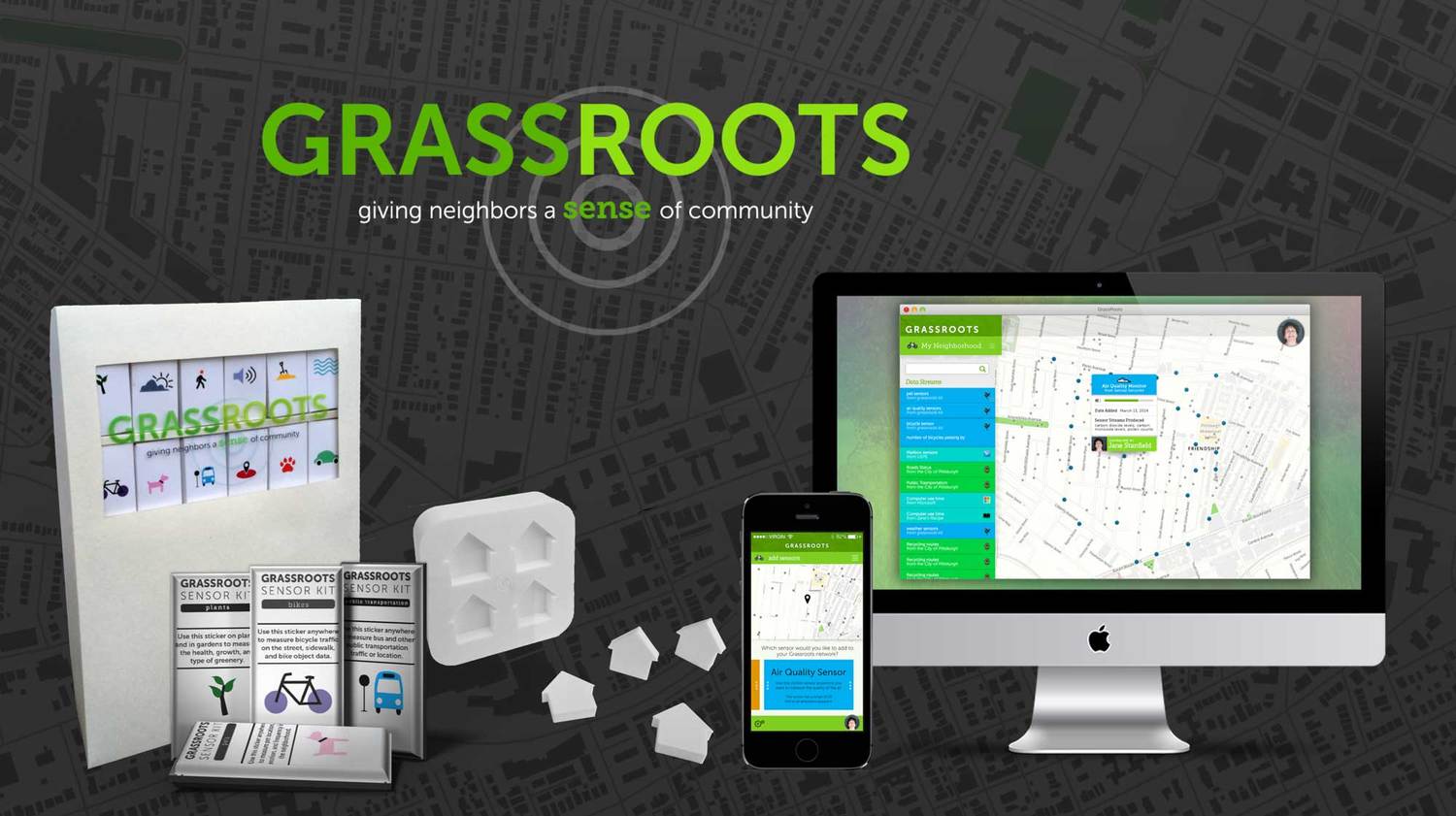
Key Design Challenges and Lessons
Thie project presented some interesting and important design challenges, most of which connected to designing for a neighborhood which is neither completely private nor public.
- How to maintain neighbor privacy while enabling multiple people to share streams of sensor data? We developed a user-interface to give neighbors the ability to set circles and data granularities so they could share detailed information with near neighbors and offer general information for the public.
- How to get neighbors enthusiastic about a completely new system? By targeting a specific subgroup, pioneers and community leaders, we found that their specific needs for advocacy and community would be enough motivation for them to use the system.
- How long will these sensors actually last? When we designed the system, we discussed the technical capabilities with engineers and sensor experts. When we presented our concept, most found our concepts to be pushing the boundary of what was possible in 2015, “…but in four or five years… sure this will be possible.” We were glad to be in that sweet spot of near-future design.
We were pleased with the results, and we got to present our work at Microsoft Design Expo 2014. It was a harrowing 72-hour experience, but we learned a lot about presentations and compressing our narrative down to a tight fifteen minutes.

